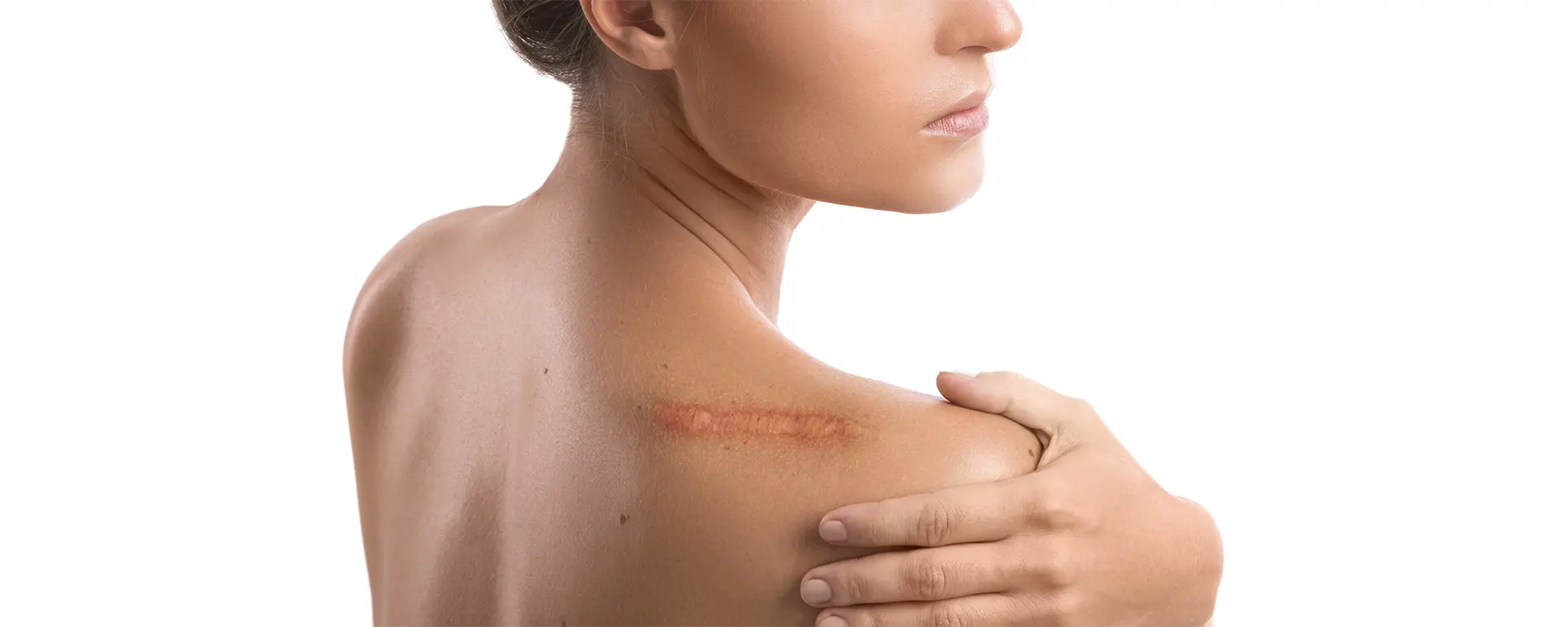Scars are a natural part of the skin’s healing process, but for many, they can be a source of physical and emotional discomfort. From minor abrasions to surgical wounds, how a scar forms is influenced by a range of factors—including genetics, skin type, and the type of injury. In recent years, dermatology has made significant strides in understanding how scars develop and, more importantly, how to prevent or minimise them. This article dives into the latest research and treatment options in scar modulation, including early laser intervention, silicone therapy, and cutting-edge topical agents.
Understanding the Biology of Scar Formation
Scar formation begins with inflammation. Once the skin is injured, the body launches a complex repair process involving clotting, inflammation, proliferation, and remodelling. Fibroblasts produce collagen to rebuild tissue, but an imbalance—especially overproduction—can result in raised or pigmented scars. Recent studies are uncovering the cellular mechanisms that cause some individuals to heal with minimal scarring, while others develop hypertrophic or keloid scars. This growing body of knowledge is helping dermatologists tailor treatments based on biological risk factors.
The Role of Inflammation in Scarring
Inflammation is a double-edged sword. While essential for fighting infection and signalling tissue repair, prolonged or excessive inflammation can damage surrounding tissue and worsen scar formation. Dermatology research now focuses on modulating inflammatory mediators such as cytokines and prostaglandins. Reducing inflammation early on—using topical corticosteroids or newer agents like diclofenac or onion extract—can limit fibroblast activity and collagen deposition. Understanding this inflammatory cascade is vital for improving outcomes in acute wound care and long-term scar prevention.
Early Laser Intervention: Changing the Game
Traditionally, laser treatment was reserved for mature scars. However, a new wave of research supports the early use of non-ablative fractional lasers within weeks of wound closure. These lasers stimulate dermal remodelling without damaging the epidermis, promoting more organised collagen formation. Studies show that early intervention reduces the risk of hypertrophic scars and improves texture and pigmentation. Lasers such as the pulsed dye laser (PDL) and fractional Er:YAG have been particularly effective, with minimal downtime and excellent safety profiles.
Silicone Gel and Sheets: Still the Gold Standard
Silicone-based products remain one of the most widely studied and effective options for scar prevention. These gels and sheets work by hydrating the scar tissue and regulating fibroblast activity through occlusion and pressure. The result is flatter, softer scars with improved colour. Recent advancements include the addition of antioxidants and peptides to enhance efficacy. Multiple clinical trials continue to affirm their use, especially post-surgery or post-laser. Importantly, silicone therapy is well tolerated, making it suitable even for sensitive skin.
The Impact of Topical Agents in Modern Scar Care
While traditional ointments have offered some benefits, modern science is bringing forward a new generation of topical agents. Ingredients like centella asiatica, allantoin, and niacinamide are showing promise in reducing inflammation and supporting collagen remodelling. Additionally, bioengineered peptides are being explored for their ability to mimic the body’s natural wound-healing proteins. Some formulations now include growth factors or stem-cell-derived exosomes to accelerate healing and reduce scarring. These advances provide patients with more effective, non-invasive options for scar management.
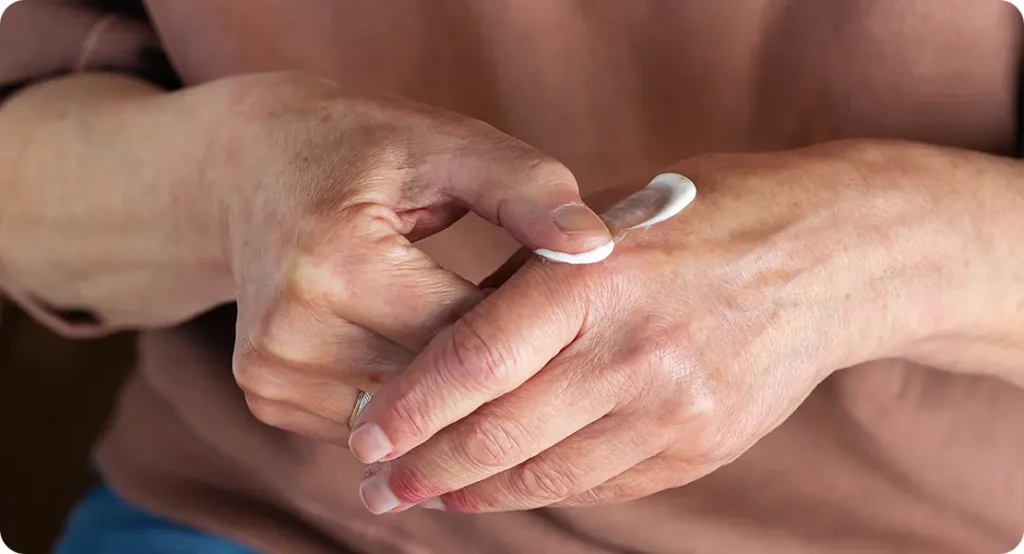
Microneedling and Its Preventive Potential
Microneedling, or collagen induction therapy, involves the use of fine needles to create controlled micro-injuries. This encourages the skin to regenerate and remodel collagen more evenly. When used preventively—especially during the early healing phase—microneedling may reduce the likelihood of abnormal scar tissue formation. Studies suggest that combining microneedling with topical agents or platelet-rich plasma (PRP) enhances its effectiveness. While more research is needed, microneedling is quickly gaining recognition as a proactive tool in scar prevention strategies.
Platelet-Rich Plasma (PRP) in Scar Modulation
PRP therapy harnesses the body’s own healing factors by concentrating platelets and growth factors from the patient’s blood. When applied to healing wounds or used in conjunction with microneedling, PRP has been shown to reduce inflammation, boost collagen synthesis, and improve tissue regeneration. Its autologous nature makes it safe and well tolerated, with minimal risk of allergic reaction. Though not a standalone cure for scarring, PRP is becoming a valuable adjunct in the dermatologist’s toolkit, particularly in post-operative or acne-prone skin.
Stem Cell Therapy: A Future Frontier
One of the most exciting areas in scar prevention is stem cell therapy. Research is focusing on mesenchymal stem cells (MSCs) and their ability to influence wound healing at a cellular level. MSCs can modulate immune responses, enhance angiogenesis, and promote more organised collagen deposition. While much of this work remains in early clinical stages, preliminary studies show promise for reducing the severity and visibility of scars. Dermatologists are cautiously optimistic, recognising the need for further research and regulatory clarity.
Keloid and Hypertrophic Scars: A Different Challenge
Preventing raised scars requires a different approach. Keloids, in particular, are notorious for their recurrence and resistance to treatment. Research now suggests a multifactorial approach—combining intralesional steroids, laser therapy, and silicone—is the most effective way to prevent or minimise them. New treatments under investigation include cryolipolysis, botulinum toxin injections, and interferon therapy. Identifying patients at high risk (such as those with a family history or darker skin types) is key to applying early intervention strategies.
Genetic Research and Personalised Scar Care
With the advent of genomics, dermatologists are beginning to explore how genetic predisposition influences scarring. Certain gene variants are associated with exaggerated collagen responses, making some individuals more prone to hypertrophic or keloid scars. Future developments may allow for genetic screening before surgery or cosmetic treatments, enabling more personalised prevention plans. This precision medicine approach could be revolutionary in fields like plastic surgery, where scar aesthetics are crucial to patient satisfaction.
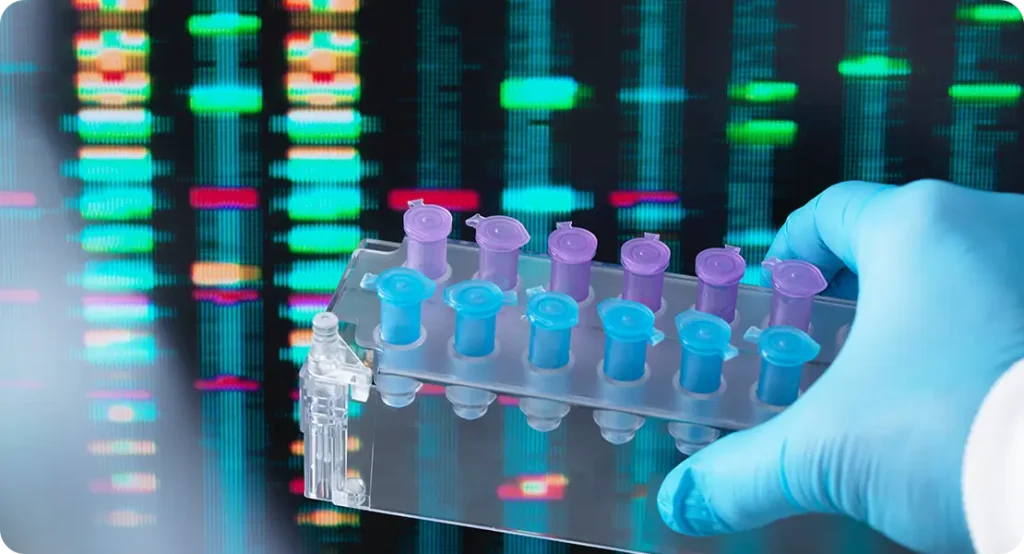
The Role of Nutrition and Lifestyle
Emerging research is linking nutrition to skin healing and scar outcomes. Diets rich in vitamins A, C, E, zinc, and protein support collagen production and immune function. Antioxidants also help neutralise free radicals that impair wound repair. Lifestyle factors—like smoking, alcohol use, and stress—are known to delay healing and worsen scarring. Dermatologists increasingly advocate for holistic care: optimising internal health alongside topical treatments for better scar outcomes.
Sun Protection: A Simple Yet Powerful Tool
One of the most overlooked aspects of scar prevention is UV protection. Fresh scars are particularly sensitive to sun exposure, which can lead to hyperpigmentation and prolonged healing. Broad-spectrum SPF 30 or higher is recommended on healing skin—ideally paired with physical barriers like clothing or silicone sheets with built-in UV filters. Consistent sun protection improves scar colour uniformity and overall cosmetic outcomes. It’s a simple intervention with proven results.
Post-Surgical Protocols: Optimising Healing
Dermatologists and surgeons are now integrating scar prevention into post-operative protocols. Instead of waiting for a scar to “mature,” clinicians initiate early interventions within days of suture removal. Protocols may include gentle cleansing, hydration, silicone gel, and scheduled laser sessions. Educating patients on how to care for healing skin is also essential—especially around avoiding tension, infection, or unnecessary irritation that could worsen scarring.
Psychological Impact and Patient Education
Scars, especially facial or disfiguring ones, can take a toll on self-esteem and mental well-being. The psychological burden is significant, particularly in young adults or those with visible scarring from trauma or acne. Dermatologists are encouraged to address not only the physical treatment but also emotional support. Setting realistic expectations and involving patients in their care plan can reduce anxiety and improve adherence to scar prevention regimens.
Emerging Role of Exosomes in Skin Regeneration
Exosomes—tiny vesicles secreted by cells—are emerging as powerful players in skin regeneration and scar modulation. Derived from stem cells or platelet-rich plasma, exosomes contain growth factors, proteins, and RNA that can influence cell behaviour. When applied topically or injected, they have been shown to encourage fibroblast regulation, promote balanced collagen formation, and reduce inflammation. Current studies suggest exosomes may outperform traditional treatments in accelerating wound healing and improving scar aesthetics. While research is still early-stage, dermatologists are watching closely as exosome-based therapies may become a cornerstone of next-generation scar prevention protocols.
Botulinum Toxin: Beyond Wrinkle Reduction
Botulinum toxin (commonly known as Botox) is widely used for cosmetic wrinkle reduction, but recent dermatological studies reveal another surprising benefit: scar improvement. By temporarily relaxing the muscles around a healing wound, botulinum toxin can reduce tension that might otherwise stretch the skin and worsen scar formation. It’s particularly useful in high-movement areas such as the forehead, around the mouth, or after facial surgeries. Some trials suggest early post-operative injections can significantly improve scar texture and reduce hypertrophy. While not routinely used, this novel approach is gaining traction in cosmetic and reconstructive dermatology.
The Microbiome and Its Influence on Healing
The skin microbiome—our natural layer of beneficial bacteria—plays a crucial role in maintaining skin integrity and supporting healing. Disruptions in this delicate ecosystem, such as from harsh antiseptics or antibiotics, may delay healing and increase the risk of infected or abnormal scarring. Research is now investigating how probiotics and microbiome-friendly skincare can create a more favourable environment for wound repair. Some topical products are being designed to balance bacteria while delivering anti-inflammatory and hydrating ingredients. This intersection between microbiology and dermatology offers a promising avenue for improving both healing speed and scar quality.
Cryotherapy and Scar Prevention
Cryotherapy, traditionally used to treat warts and skin lesions, is also showing promise in scar management—particularly for keloids. By freezing the tissue, cryotherapy induces cell death and reduces collagen overgrowth. Newer, more targeted techniques like intralesional cryotherapy allow for controlled freezing from within the scar, offering better outcomes with fewer side effects. Combined with corticosteroid injections or silicone gel, cryotherapy may help flatten existing keloids and prevent recurrence post-excision. Although this method is still largely used for treatment rather than prevention, early application in at-risk patients is being explored.
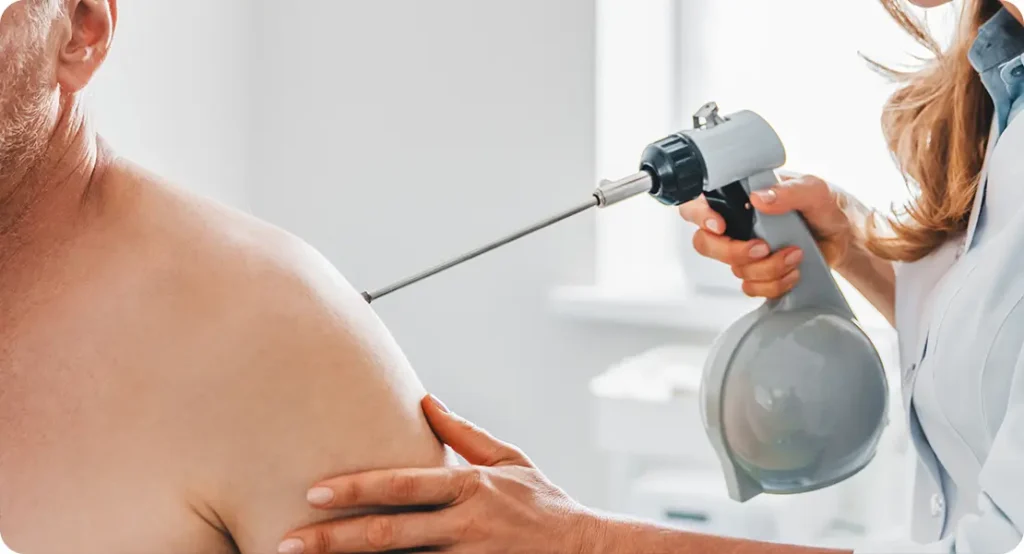
Fractional Radiofrequency Devices: Precision Remodelling
Fractional radiofrequency (RF) is another high-tech tool being used to improve skin healing. Unlike lasers, RF uses energy to heat the dermis without relying on light absorption, making it suitable for all skin tones. Devices like microneedling RF combine controlled injury with thermal stimulation, promoting neocollagenesis in a more organised pattern. Used early on or in combination with laser or PRP, RF treatments can reduce the severity of scars, improve skin texture, and support balanced remodelling. Its versatility and safety in darker skin types make it a valuable asset in personalised scar care.
Adhesive Strips and Mechanical Offloading
One underappreciated but effective method of scar prevention involves the use of adhesive strips or taping techniques. These mechanical offloading tools help reduce tension across healing incisions—particularly in areas prone to movement. Less tension means less risk of widened, stretched scars. Brands now offer medical-grade tapes designed to be hypoallergenic and breathable, staying in place for extended periods. Research has shown that even simple techniques like Steri-Strips, when used consistently post-suture removal, can contribute to flatter, more discreet scars. It’s a low-cost, low-tech solution with proven value in everyday practice.
Standardising Scar Assessment: The Role of Scoring Systems
To better track and compare scar treatments, dermatologists rely on validated scoring systems such as the Vancouver Scar Scale and the Patient and Observer Scar Assessment Scale (POSAS). These tools evaluate characteristics like pigmentation, vascularity, pliability, and height. Objective measurements help guide treatment decisions, ensure consistency in research trials, and track patient progress over time. The development of digital imaging and AI-assisted analysis is also on the rise, offering even more precise assessments of scar evolution. As the science of prevention advances, standardised evaluation remains crucial to refining what works best.
Innovations in Wound Dressings
Modern wound dressings have evolved far beyond simple gauze. Today’s options include hydrocolloid, hydrogel, alginate, and foam dressings—all designed to maintain an optimal healing environment. Some dressings are now impregnated with antimicrobial agents, growth factors, or silicone to actively reduce infection and promote balanced tissue repair. Vacuum-assisted closure (VAC) systems, which use negative pressure, are also being used post-surgery to reduce fluid build-up and tension on healing skin. Clinical studies increasingly support the idea that the right dressing—chosen based on wound type and location—can significantly influence scar formation outcomes.
AI and Machine Learning in Scar Prediction
Artificial intelligence is now being employed to predict which wounds are likely to scar poorly based on photographs, patient history, and biometric data. Machine learning algorithms can assess healing trajectories and flag patients who might benefit from early intervention. This technology is still developing but could eventually lead to automated treatment recommendations and tailored prevention plans. AI may also be used in clinical trials to objectively measure treatment outcomes, improving the accuracy of scar research and supporting evidence-based dermatology.
Combining Modalities for Optimal Results
No single treatment works for all scars or all patients. As a result, dermatologists often use combination therapy to maximise outcomes. For example, fractional laser followed by silicone gel, or microneedling paired with PRP and a peptide-based topical, may produce better results than any method alone. The sequencing and timing of treatments are key: interventions must be tailored based on the wound’s location, depth, and patient risk factors. Ongoing research continues to explore which combinations are most effective, paving the way for comprehensive scar prevention protocols.
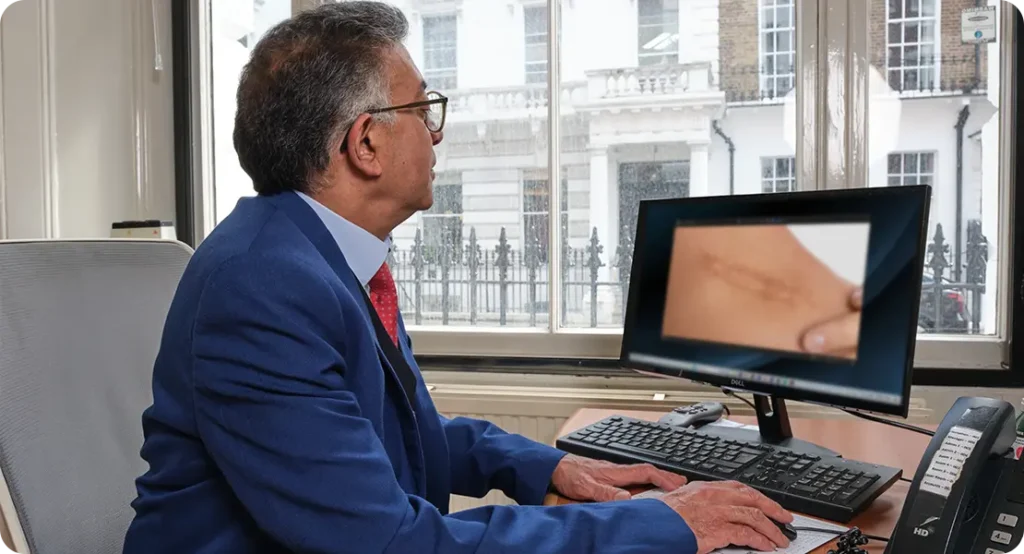
Cultural and Ethnic Considerations in Scar Care
Scarring tendencies vary significantly across ethnic groups. Individuals with darker skin tones are more prone to post-inflammatory hyperpigmentation, hypertrophic scars, and keloids. As such, treatments must be adapted to minimise risk and respect skin biology. Certain lasers, for example, may be unsuitable or require adjustment for melanin-rich skin. Increasing awareness of these variations has led to more inclusive research and development of treatments that are safe and effective for diverse populations. Dermatologists are also becoming more culturally aware when advising patients on scar expectations and outcomes.
The Future of Scar Prevention: A Multi-Disciplinary Approach
As dermatology moves toward more proactive scar prevention, a multidisciplinary approach is proving essential. Plastic surgeons, dermatologists, wound care specialists, and aesthetic practitioners must work together to create holistic treatment plans. Nutritional support, psychological care, patient education, and advanced technologies all have a role. The ideal future involves collaborative care from the moment of injury through complete skin remodelling. With continued research and cross-disciplinary innovation, scar prevention is no longer a reactive effort—it’s becoming a well-orchestrated strategy for lifelong skin health.
Final Thoughts: Prevention is the New Frontier
The science of scar prevention is evolving rapidly. From lasers and silicone to stem cells and genetics, dermatology is moving beyond reactive treatment to proactive care. Early intervention, personalised regimens, and evidence-based topical therapies now give both patients and clinicians a real chance at minimising scarring from the outset.
As research continues, the future looks promising—where visible, permanent scarring may one day become the exception rather than the rule. If you’re navigating post-procedure healing or managing an injury, it’s worth consulting a dermatologist early. Prevention, after all, starts on day one.
If you would like help treating scars, you can get in touch with us at The London Dermatology Centre to consult with one of our expert dermatologists.
References:
- Bayat, A., McGrouther, D.A. and Ferguson, M.W.J., 2003. Skin scarring. BMJ, 326(7380), pp.88–92.
Available at: https://www.bmj.com/content/326/7380/88 [Accessed 13 May 2025].
– A foundational review of the biological mechanisms behind scar formation and implications for prevention. - National Institute for Health and Care Excellence (NICE), 2020. Burns and scalds: prevention and management. Clinical guideline [NG191]. London: NICE.
Available at: https://www.nice.org.uk/guidance/ng191 [Accessed 13 May 2025].
– Includes evidence-based prevention and treatment guidelines for scarring following burns and trauma. - Mustoe, T.A., Cooter, R.D., Gold, M.H., Hobbs, F.D.R., Ramelet, A.A., Shakespeare, P.G., Stella, M., Téot, L., Wood, F.M. and Ziegler, U.E., 2002. International clinical recommendations on scar management. Plastic and Reconstructive Surgery, 110(2), pp.560–571.
Available at: https://journals.lww.com/plasreconsurg/Fulltext/2002/08000/International_Clinical_Recommendations_on_Scar.40.aspx [Accessed 13 May 2025].
– A widely referenced consensus document offering comprehensive advice on scar prevention and therapy. - Lee, J.Y., Yang, C.C. and Chao, S.C., 2020. Emerging therapies for scar prevention and treatment. Dermatologic Surgery, 46(5), pp.643–650.
https://doi.org/10.1097/DSS.0000000000002130
– Discusses novel interventions including silicone gels, lasers, and emerging molecular targets for scar modulation. - Wang, Z., Fathi, A., Marano, J.M., Buras, D. and Orgill, D.P., 2022. Mechanobiology of scar formation: Emerging concepts and therapeutic implications. Trends in Molecular Medicine, 28(6), pp.538–553.
https://doi.org/10.1016/j.molmed.2022.03.003
– A recent scientific review exploring the role of mechanical tension and cellular pathways in scar formation and prevention.
